MSI Launches the Nightblade Gaming Barebones, a mini-ITX with OC
by Ian Cutress on March 6, 2014 8:10 AM EST- Posted in
- Barebones
- Intel
- MSI
- Cases/Cooling/PSUs
- 802.11ac

Traditional PC component manufacturers are moving into other areas of interest. For MSI that means devices such as tablets and notebooks, as well as moving forward with their traditional motherboard and graphics cards lines. Similar to ASUS and ASRock, MSI is now moving into the full desktop space with their own barebones package. Like some other barebones we have reviewed, MSI will supply the chassis, the motherboard, the CPU cooler, the power supply and the optical drive, and the user (or system integrator) will have to choose a CPU, DRAM, a GPU and storage. MSI is today launching the MSI Nightblade, a gaming mini-ITX barebones designed to fit a full size GPU (such as the MSI R9 290X), be easy enough to carry around, and even a turbo button for a quick overclock. The barebones is based on the Z87 platform, using MSI's mini-ITX gaming motherboard.
Does anyone remember those old Turbo buttons PCs used to have? I remember having one that boosted a Windows 3.1 machine from 200 MHz to 233 MHz if I remember correctly. MSI is bringing it back in the Nightblade, with a special connector from the front panel to the motherboard. By using the MSI Z87I Gaming, there is a jumper that this button can connect on to.
MSI’s Gaming range is red and black, so the chassis is no different with black being the main color with red for the accents and lights. The carry handle is used to help prop up the case when on the floor, meaning that the case is held at right angles when carried.
Inside there is space for the 600W power supply as part of the barebones, two 2.5” SSD slots, the optical drive, the motherboard and the dual slot graphics card with a 290mm maximum length. The chassis itself is 16 liters, measuring 345.8 x 277.3 x 175.7mm. The optional CPU cooler with one of the SKU variants is a 3800 RPM Tower Cooler with support up to 113W, although users can apply their own. The chassis comes with two fans (92mm, 3600 RPM rear; 120mm, 4000 RPM side) with an optional third, and the PSU is rated 80PLUS Gold.
The motherboard comes with Realtek ALC1150 audio, a Qualcomm Atheros Killer E2200 NIC and Intel Wireless-AC 7260 dual band 802.11ac WiFi. The front of the case comes with two USB 3.0 ports and two USB 2.0 ports, as well as the OC button, audio jacks and an on/off switch.
The weight of the barebones as shipped is 7.8kg (17.2 lbs), and will be available worldwide from the second week of March. Initial pricing starts at 399-499 EUR (depending on the SKU), or for many regions the MSRP is US$599 and will be bundled with a SteelSeries Siberia V2 Dragon Headset.
Source: MSI


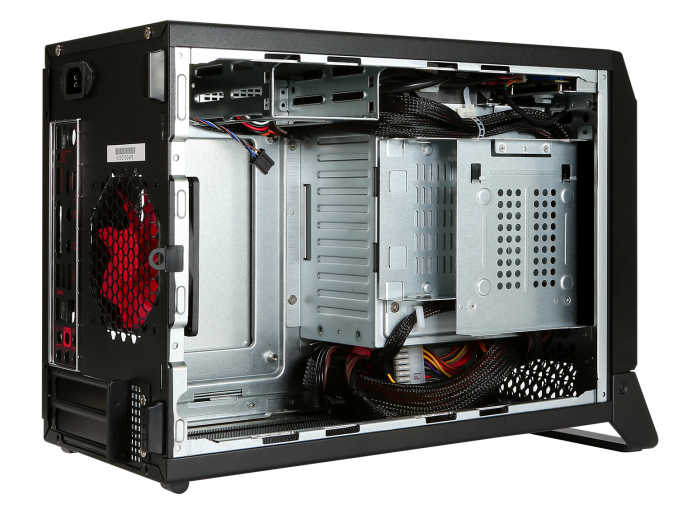
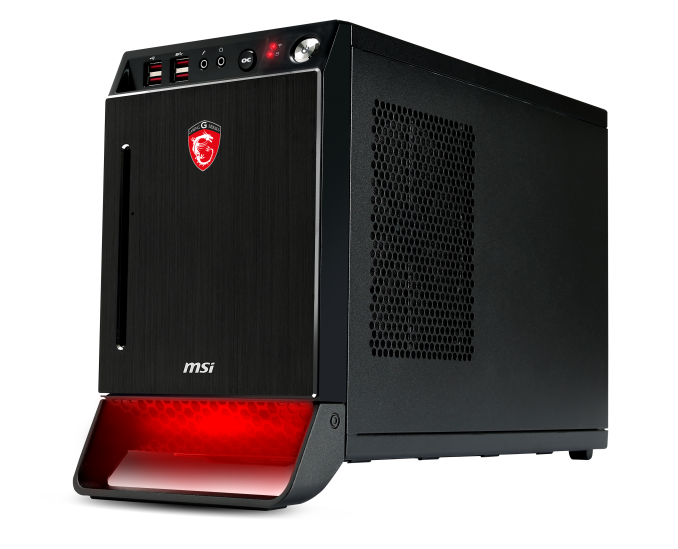
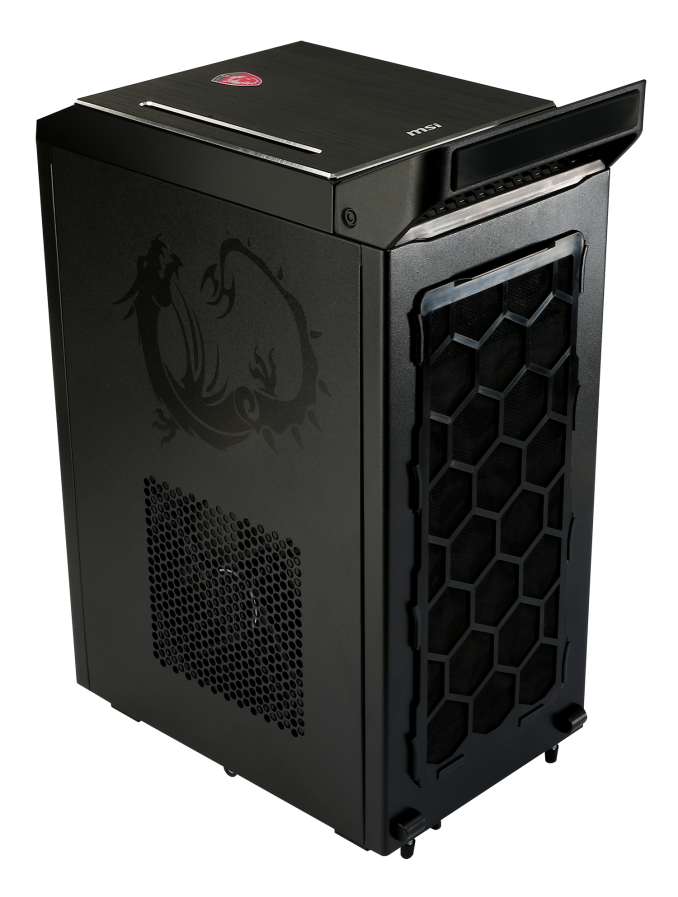
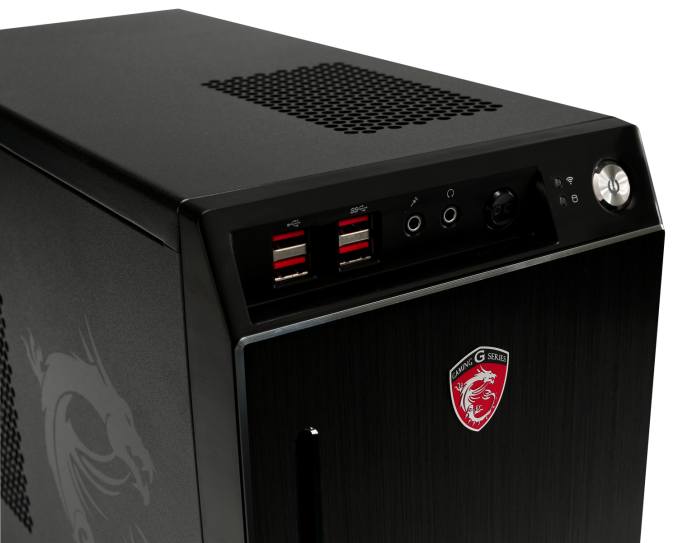
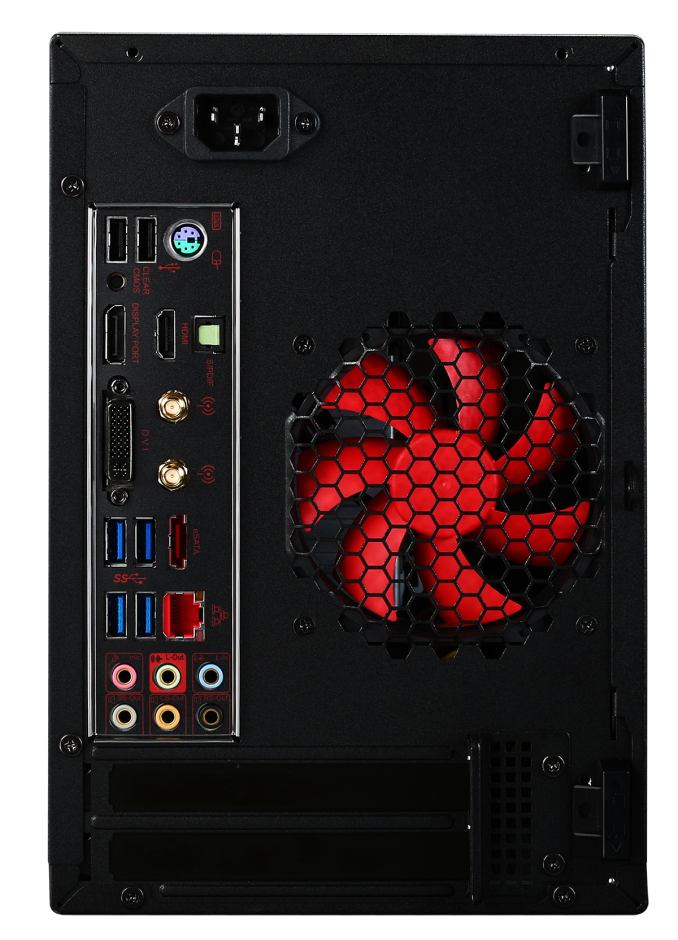














30 Comments
View All Comments
DanNeely - Thursday, March 6, 2014 - link
Don't the standard PCI slot covers and mobo IO backpanel cutout do that?karmacoma - Thursday, March 6, 2014 - link
I like it. I've recently been looking at mini-ITX cases, but have found few cases which can hold a GTX 780/780 Ti. Seeing as I buy MSI products already (my GPU and notebook), I wouldn't hesitate to pick this up for my next build.martyrant - Thursday, March 6, 2014 - link
This would be a lot more killer if it supported watercooling...would love to see how a box like this with a CryoVenom 290 would do.Galatian - Friday, March 7, 2014 - link
This!I'm still waiting for a mini-ITX case with enough space for a watercooling setup. The new Silverstone Raven RZV01 comes close, but one slim 240 radiator is probably not enough to silently cool a bigger processor and a GPU.
larkhon - Thursday, March 6, 2014 - link
"I remember having one that boosted a Windows 3.1 machine from 200 MHz to 233 MHz if I remember correctly."200mhz and still with Windows 3.1? 200mhz but bring us to what? 1997? 1998? sounds strange.
Last PC with a Turbo was my 486DX33, then the Pentium 120mhz was always running full speed, I don't think there was still a turbo (at least one we would use at all).
DanNeely - Thursday, March 6, 2014 - link
"Does anyone remember those old Turbo buttons PCs used to have? I remember having one that boosted a Windows 3.1 machine from 200 MHz to 233 MHz if I remember correctly."Kids these days...
Originally pressing the button disabled turbo mode and slowed your computer down to the level of an 8086 or 80286 so you could play software (typically games) that were written assuming they'd only be run at a single clock speed and became unplayable on faster systems because they did floating point math in a loop for delays instead of using the clock to control pacing.
cgalyon - Thursday, March 6, 2014 - link
I actually remember using that programming trick (math loops for delays). Didn't like it, but we didn't have a pause or delay command (tied to the clock) for a while. Was wonderful when we could adjust it to some non-variable interval!axelthor - Thursday, March 6, 2014 - link
If I remember correctly de-turbo in its simplest form dropped the CPU speed down to the ISA bus speeds, which was 8 MHz for the 16-bit ISA found on 386 and 486, and 4.77MHz for the 8-bit ISA on 286 and older CPUs. Basically simple underclocking.Later on (486 and early Pentium/i586) motherboard vendors implemented more creative ways to obtain the same result without actually lowering clockspeeds.
anactoraaron - Thursday, March 6, 2014 - link
Actually their GX620 and slightly beyond series notebooks had a 'turbo' button. It was more of a gimmick, and at least for me, would cause bluescreens more than actually increasing performance.Arkive - Thursday, March 6, 2014 - link
This could be a great LAN gaming rig, especially with the integrated wireless. I just wish the P/S was a hair beefier since it's right on the lower-end of requirements for a GTX 780.